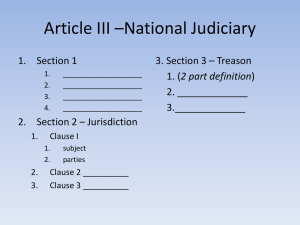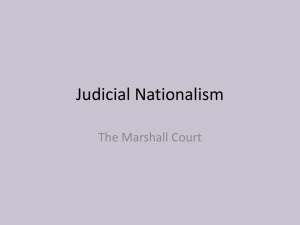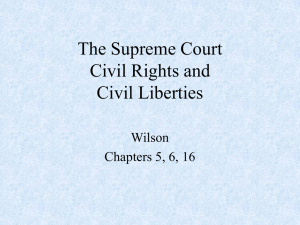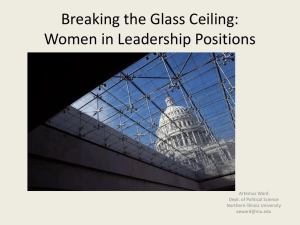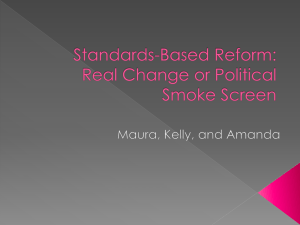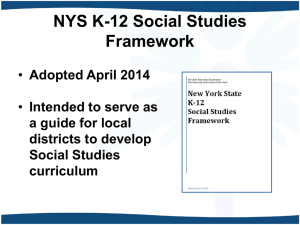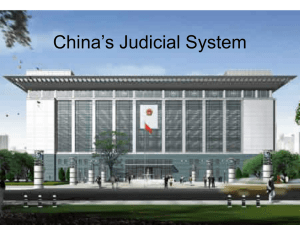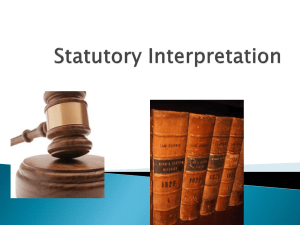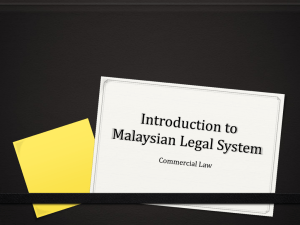Ch. 10 Power Point
advertisement
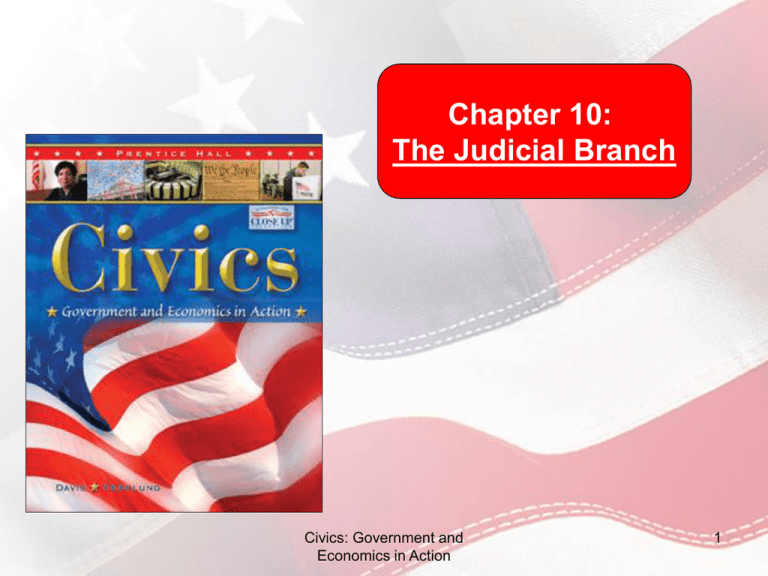
Chapter 10: The Judicial Branch Civics: Government and Economics in Action 1 Chapter Links Section 1 “The Role of the Federal Courts” Section 2 “The Organization of the Federal Courts” Section 3 “The Supreme Court” Civics: Government and Economics in Action 2 Section 1 “The Role of the Federal Courts” Section Outline: I. Laws and Courts II. What Courts Do III. State Courts and Federal Courts Main Idea: Our legal system provides a framework for resolving conflicts and protecting the rights of citizens. Federal and state courts hear criminal and civil cases. The Supreme Court hears a handful of those cases on appeal. Civics: Government and Economics in Action Key Terms: •Plaintiff •Defendant •Prosecution •Precedent •Original Jurisdiction •Appeal •Appellate Jurisdiction 3 Laws and Courts • Judicial Branch Components –The Supreme Court and more than 100 other federal courts. • Disputes involving laws are resolved in the legal system Civics: Government and Economics in Action 4 What Courts Do • The Parties in a Conflict: – Plaintiff: Individual or group bringing a complaint against another party. – Defendant: The party who answers the complaint and defends against it. – Prosecution: A government body that bring a criminal charge against a defendant who is accused of breaking one of its laws. – Defense: The legal representation for the defendant Civics: Government and Economics in Action 5 What Courts Do (cont.) • Members of the Court – Judge – Jury • Interpreting the Law – Precedent • Guideline for how all similar cases should be decided in the future. Civics: Government and Economics in Action 6 State Courts and Federal Courts • Jurisdiction – Original Jurisdiction • The authority to hear a case first – Appeal • Asking a higher court review the decision and determine if justice was done. – Appellate Jurisdiction • The authority to hear an appeal • Federal Cases – Those involving federal laws & appeals from State Cases. Civics: Government and Economics in Action 7 Section 2 “The Organization of the Federal Courts” Section Outline: I. The District Courts III. The Supreme Court II. The Courts of Appeals IV. Federal Court Judges Main Idea: Our federal court system is made up of district courts, courts of appeals, the Supreme Court, and a few specialized courts. Civics: Government and Economics in Action Key Terms: •Courts of Appeals •Circuit Courts 8 The District Courts • The “workhorse” of the federal court system – 94 District Courts – 300,00 cases per year – 80 percent of federal cases – Between 1 and 28 judges may serve a district court – The trials have witnesses and juries Civics: Government and Economics in Action 9 The Courts of Appeals • Court of Appeals – This court handles the appeals from the federal districts – Often called Circuit Courts – There are twelve regular Circuit Courts, with a thirteenth one serving special federal courts and agencies of the executive branch. • Trials – Three Judges who affirm or reverse the lower court’s decision. – No jury, no witnesses Civics: Government and Economics in Action 10 The Supreme Court • Highest Court in the Federal system – Purpose: to serve as the final court of appeals for both the state and federal court systems. • Other Special Federal Courts – – – – Court of Claims Court of Customs Court of Patent Appeals Tax Court Civics: Government and Economics in Action 11 Federal Court Judges • Appointment – Federal judges are appointed by the President and approved by the Senate – They serve life terms; can only be removed by impeachment or resignation. – Only nine judges are appointed to the Supreme Court Civics: Government and Economics in Action 12 Section 3 “The Supreme Court” Section Outline: IV. Influences on Judicial Decision Making I. Judicial Review V. A Changing Court II. The Justices VI. III. The Work of the Supreme Court The Court and Other Branches of Government Main Idea: The Supreme Court is the highest court in the United States. It has the final about what the Constitution means. The Supreme Court establishes the longest lasting precedents in our legal system. Civics: Government and Economics in Action Key Terms: •Judicial Review •Opinion •Judicial Activism •Judicial Restraint 13 Judicial Review • Judicial Review – The power to overturn any law that the Court decides is in conflict with the Constitution. • Marbury v. Madison, 1803 – Overturned the Judiciary Act of 1789 – Established the precedent that the Supreme Court has Judicial Review Civics: Government and Economics in Action 14 The Justices • Qualifications – None listed in the Constitution – The President selects justices from the most respected and qualified judges, lawyers, and legal scholars in the country. – There has been 108 Justices; All but 4 of them have been white men. – Exceptions: Thurgood Marshal, Clarence Thomas, Sandra Day O’Connor, and Ruth Bader Ginsburg. Civics: Government and Economics in Action 15 The Work of the Supreme Court • Selecting Cases – More than 8,000 requests are made per year, but only about 100 cases are heard • Hearing Arguments – Attorneys submit briefs, and make oral arguments before the court • Making a Decision – The Justices vote and usually submit and opinion or written statement explaining the reasons for the decision. Civics: Government and Economics in Action 16 Civics: Government and Economics in Action 17 Influences on Judicial Decision Making • Considerations: – Laws – The Constitution – Precedents • Duties – Be fair and impartial – Respect precedent – Try to determine the intent of the Framers Civics: Government and Economics in Action 18 A Changing Court • Judicial Activism – An effort by judges to take an active role in policymaking by overturning laws relatively often. • Judicial Restraint – An effort by judges to avoid overturning laws and to leave policymaking up to the other two branches of the government. Civics: Government and Economics in Action 19 The Court and Other Branches of Government • The President’s Power – Appointment of judges • The Power of Congress – Confirmation of judges • Citizen Participation Civics: Government and Economics in Action 20

